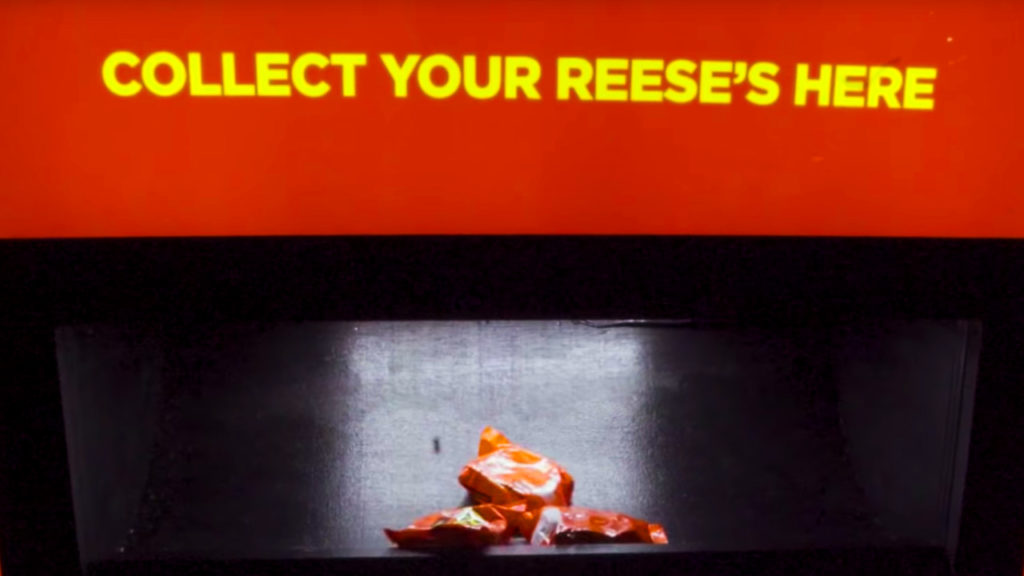Reese’s launched an activation for New York residents that lets them exchange unwanted Halloween candy. Saying its candy is better than the rest is all part of Reese’s new #NotSorry campaign.
It’s an age-old complaint—you get home from a long night of trick-or-treats only to find that your haul is plagued by candy you can’t stand. Sometimes you can pawn them off to your little brother, but we’ve all been left with undesirables that just hang around until they become fossilized.
Reese’s is offering a simple solution—change that candy into what you want—as long as what you want is Reese’s. Citing a statistic that 99 percent of Americans wish they could trade their Halloween candy, a branded vending machine has been erected near Washington Park in NYC that does just that.
From 4:00-9:00 p.m. Wednesday, consumers can insert their unwanted candy into the machine and out pops Reese’s instead. The machine has been loaded with 10,000 candies and will make trades until the designated time or when it runs out, whichever comes first.
The activation is part of Reese’s new #NotSorry campaign, encouraging consumers to unapologetically declare their love for the brand. Specifically, #NotSorry uses a combination of Halloween nostalgia and DIY tips to drive purchase intent.
Trick-or-treating as an adult, baking with Halloween candy and preferring chocolate peanut butter pumpkins to the real thing are examples of how Reese’s uses its campaign message (and hashtag) across social media. Hershey’s website offers Halloween tips, recipes and free game templates, as well as links to purchase candy online. In addition to pumpkin-shaped candies, the brand is pushing specially-marked glow-in-the-dark packaging for the holiday.
“We’re seeing great engagement and ideas from consumers on social media for these new products,” said Michele Buck, Hershey CEO, during the company’s Q3 earnings call. “In the US, we are focused on executing a strong finish to the Halloween season both in store and online.”
According to Buck, Hershey is outperforming the Halloween candy category and is expected to deliver its first $600 billion season.

